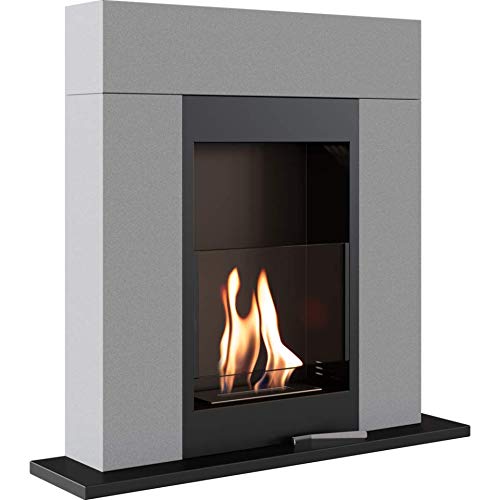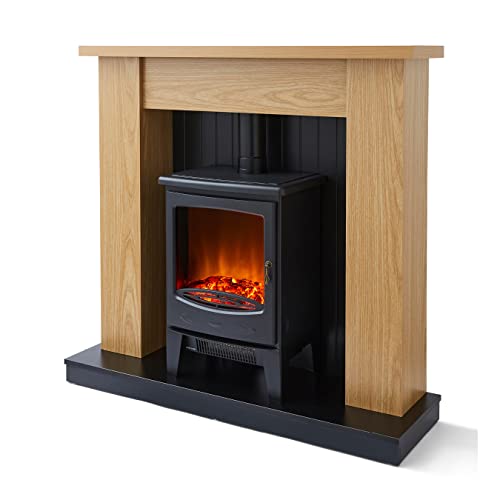Choosing a Fireplace Surround
If you are using a fireplace to provide warmth or aesthetics, the right surround can give your living space a unique. It can be difficult to pick the right fireplace surround that is both safe and compliant with the code.
The custom-built surrounds are constructed from non-combustible material that adheres to the National Fire Code. They are a great addition to any style home.
Simple Concrete Surround with Marble Slabs
A fireplace surround is the focal point of the room, and can provide warmth and a sense of style. It can be crafted with a variety of materials and can be designed to suit many different design styles. When choosing a fireplace style it is essential to think about the style and the budget of the room.
Marble fireplace surrounds are an elegant option that can be paired with a wide range of design styles. They can be combined with rustic woods as well as modern metals to create a unique, fireplaces shop contemporary design. Marble is fairly easy to maintain and can withstand extreme temperatures, making it an ideal choice for a fireplace surround.
Stone is a classic material for fireplace surrounds that has a timeless look and can be used in a variety of homes. It can be carved or etched for an updated look, or left untouched to give it a traditional look. Stacked stone veneers are a popular option that can be used to add texture and depth to rooms.
Granite is a very popular material for modern fireplace surrounds since it’s strong and resistant to heat very well. It is also available in a variety of patterns and colors, making it a great choice to create a variety of design styles. Quartzite can also be formed and shaped to match a modern surround.
Installing a concrete enclosure for a fireplace might be a possibility for DIYers. It may seem like a daunting task, but it can be much simpler than you think when you collaborate with a professional and think ahead.
It’s also a good idea to consult with a professional when creating a fireplace surround made of marble, as it requires special care to prevent damage. A carpenter who has experience will help you avoid costly mistakes.
If you are planning to use tile for a fireplace surround, make sure it’s suitable for high temperatures. This information is usually found on the packaging, or you can inquire with an employee at an improvement fireplaces store for.
Leaning Frame Surround
The uk fireplace surround is an essential design element that can completely transform the entire space. It’s not only meant to be aesthetically pleasing but also has a functional purpose, which is to protect the wall behind the fireplace from fire damage and deflect heat back into the room. It’s available in various materials and can be customised to match any style or decor.
Selecting the right material for the frame’s leaning surround is key to creating an intentional design. Concrete is a great option because it’s durable and non-flammable. It also is attractive due to its natural texture and colour. It is typically poured in a mold to allow you to choose the option of creating an original shape.
When designing your leaning frame, make sure to add in layers. This makes the frame appear more curated rather than randomly placed. If you are planning to display heavy items such as lamps or vases on leaning frames, you can place a piece of lining for a drawer made of rubber beneath the base. This will prevent them from sliding or damaging surfaces.
Consider adding a wooden plank to the bottom of a concrete or a marble surround. This will help keep it in its place. It will also help reduce the weight and stop the item from moving while you enjoy a cup of coffee or wine fireplaces in my area the fireplace.
After you have chosen the material, it’s time to construct the actual piece. Mark the wall with the dimensions of your frame. Then with a saw, cut cleats at each mark. Ensure that the top cleat is at least a foot shorter than the shelf.
Next, screw the brackets onto the wall. Make sure the bolts are inserted through the backer board and into a nail. Pre-drilling the screw holes is necessary if needed. After that, temporarily fix the mantel to the backer board. Fix the mantel to studs with the lag bolts (2-4 bolts per stud). Make sure the bolts are strong and long enough to cover the entire thickness of the backerboard and 2/3 of the mantel’s depth.
Black Firebox Surround
Fireplace surrounds play a useful and decorative role. They shield walls from damage from heat, reflect heat into the space, and can make a fire more of a focal piece in the space. Metal and wood are the most commonly used materials used to construct fireplace surrounds. Metal surrounds are required by the building code to protect nearby combustible materials or they can improve the look of a fireplace.
The fireplace in this contemporary living area has the black firebox surround, with white marble accents. The stone is more expensive and requires more maintenance than wood, but it provides a striking design aspect to the room. The black finish also ties to the dark hues of the furniture and wood flooring to create a cohesive appearance.
While you may think of concrete as sidewalks or driveways, it is actually a very versatile and attractive material for Fireplaces Cost fireplace surrounds. It can be cut into a variety of shapes and then poured into place, providing almost endless designs. This concrete surround was cut to create a curved design. It gives modern and sleek appearance that contrasts with the darker shades of the brick wall and floor.
Another popular material for fireplace surrounds is wooden, which is available in a wide range of textures and colors that complement any decor scheme. Wooden surrounds can come in any color to fit your hearth pad. They are less heavy and more affordable than the masonry surrounds. Most wooden surrounds are designed to hold decorative items for the mantel, like lamps and vases.
Certain wood surrounds have an ornamental faceplate that covers the mantel’s top and houses the fireplace doors. This plate can be affixed with hinges that are decorative or fasteners that replicate the appearance of the look of wrought iron.
It is essential to consider the height of your fireplace when choosing a mantel made of wood. Building codes specify minimum clearance distances that prevent the spread of fire into the home. The distance will vary based on what kind of fireplace you have and also from state state or country country.
Simple Wood Surround
If you’d like your fireplace to have a traditional wood look, there are kinds of surrounds available for purchase. Some surrounds are completely solid oak and Fireplaces cost others have various materials like stone legs matched with pine or oak mantels. There are also pine or oak fireplace surrounds that are designed to be a low-fireplaces cost and easy alternative.
Many people choose to purchase a pre-made wood fireplace surround as it’s an economical way to achieve the look they want without having to hire carpenters. Some of the premade wood surrounds are available in a variety finishes, so you can blend them into your existing decor.
A handcrafted wood fire surround constructed from top quality oak is also popular. It can be stained to in a light oak hue or left untreated to ensure that the natural golden brown of the wood shows through. This fireplace surround can be used with wood or gas fires. It is available in two different styles: arched or flat.
There are a lot of tutorials available online for those who have more experience with DIY home improvement projects. They can help you build your own wooden fireplace online store surround. This step-by-step guide from H2O Bungalow will show you how to create an authentic wood surround made of pine.
The tutorial shows you how to build the horizontal part, and then the vertical pilasters that support the mantel. After these are built then you can build the mantel. The tutorial will show how to install the crown molding, which will fill in any gaps between the cladding of the wall and the wall surrounding it.
 It is crucial to adhere to the local fire code when putting in a wooden surround around a fireplace. You should keep the surround at least 6 inches away from the edge of the opening. Use a non-flammable glue join the decorative molding to the surround and ensure it stays in the correct position.
It is crucial to adhere to the local fire code when putting in a wooden surround around a fireplace. You should keep the surround at least 6 inches away from the edge of the opening. Use a non-flammable glue join the decorative molding to the surround and ensure it stays in the correct position.
